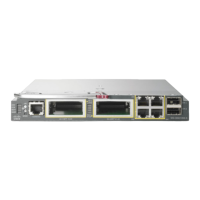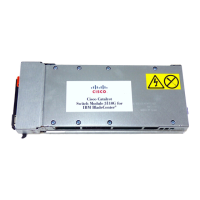2-262
Cisco Catalyst Blade Switch 3120 for HP Command Reference
OL-12248-01
Chapter 2 Cisco Catalyst Blade Switch 3120 for HP Cisco IOS Commands
macro name
The no form of this command only deletes the macro definition. It does not affect the configuration of
those interfaces on which the macro is already applied. You can delete a macro-applied configuration on
an interface by entering the default interface interface-id interface configuration command.
Alternatively, you can create an anti-macro for an existing macro that contains the no form of all the
corresponding commands in the original macro. Then apply the anti-macro to the interface.
You can modify a macro by creating a new macro with the same name as the existing macro. The newly
created macro overwrites the existing macro but does not affect the configuration of those interfaces on
which the original macro was applied.
Examples This example shows how to create a macro that defines the duplex mode and speed:
Switch(config)# macro name duplex
Enter macro commands one per line. End with the character ‘@’.
duplex full
speed auto
@
This example shows how create a macro with # macro keywords:
Switch(config)# macro name test
switchport access vlan $VLANID
switchport port-security maximum $MAX
#macro keywords $VLANID $MAX
@
This example shows how to display the mandatory keyword values before you apply the macro to an
interface:
Switch(config)# interface gigabitethernet1/0/1
Switch(config-if)# macro apply test ?
WORD keyword to replace with a value e.g $VLANID,$MAX
<cr>
Switch(config-if)# macro apply test $VLANID ?
WORD Value of first keyword to replace
Switch(config-if)# macro apply test $VLANID 2
WORD keyword to replace with a value e.g $VLANID,$MAX
<cr>
Switch(config-if)# macro apply test $VLANID 2 $MAX ?
WORD Value of second keyword to replace

